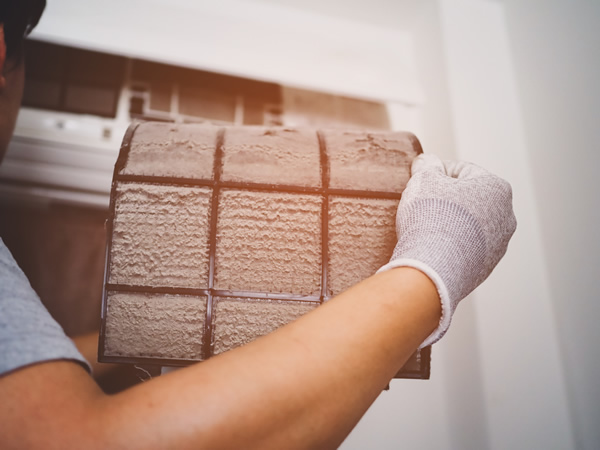After 2020, a year synonymous with domestication, many of us have become exceedingly aware of the importance of a functioning home. While many prioritise contents, design, and furniture arrangement, one invisible but essential household component is typically overlooked: air flow.
Boosting the airflow in your home is a simple way to maintain the comfort and health of your household. Following the steps ahead can ensure that you keep your home as liveable as possible for your family. But first, why is air flow important?

The benefits of increased airflow
A lack of airflow can have detrimental impacts on your health. During the winter months, as doors and windows remain closed, heaters are typically used to warm our homes. The lack of air circulation that this dynamic enforces often leads to stuffiness and discomfort.
On the more extreme end of the scale, poor airflow can have a huge impact on people with respiratory problems. Dust mites, pollen, mould spores, airborne cockroach debris, and many other non-visible air contaminants have a big impact on asthma sufferers, children, and those with pre-existing health conditions. Such conditions could even play host to a build-up of carbon monoxide and other harmful compounds.
There are many benefits of improved air flow in the home. It can keep physical health issues at bay, including headaches, allergies, and skin irritations, but also improve the mental health of those within the household. A NATE-certified HVAC company can work wonders, but alternatively, you can try the following tips.
1. Ceiling fans
Ceiling fans are an obvious choice to improve the airflow in your home, and to the surprise of many, they are useful across all seasons.
Summer is when ceiling fans will usually get the most use. During the warmer months, they should be spinning in a counter-clockwise direction. This pulls air around the room upwards, and then redistributes it downwards, not necessarily lowering the temperature, but creating a windchill effect that regulates the comfort level of your home.
In the winter months, ceiling fans should be spinning clockwise. This captures air in the opposite way to that of the counter-clockwise summer rotation. Hot air rises, so when you have the heater on, all that warmth is clinging to the ceiling. A clockwise fan rotation pushes air downwards, meaning that the hot air trapped at your ceiling can be redistributed around the room.
2. Check air vents
Air vents are invaluable to the fresh air that enters your home. Checking up on them prevents the restriction of air flow, boosts thermal comfort, and saves on energy.
Most air vents have opening and closing grates. Ensure that these are open, and not obstructed by any household furniture or cabinets. If this doesn't result in increased air flow, then more steps are required.
Check your damper valve. This is a circular blade that fits the width of the cylinder, thereby restricting or permitting airflow, depending on its position. If it is manual, there should be a switch to open it. If automatic, your damper valve will be connected to your thermostat, so will change alongside changes in temperature.
If these solutions sound beyond your qualifications, then you can always consult professional advice.

3. Check filters
This relates to the “inhalation” of air, which is warmed or cooled before being “exhaled” through your air vent. Prior to entering the vent system, however, it flows through an air filter that filters any dust, dirt, and airborne allergens out.
As a result, the air filter is susceptible to becoming clogged, disallowing air through its tiny holes. A solution to this is to clean it regularly. Doing this manually with a brush, and determining its cleanliness with a visual inspection, should suffice. If unable to remove the dirt, air filters can also be replaced.
4. Purchase a ventilator
Installing a ventilator is a great option to both increase airflow and air quality. A ventilator draws in stale air, removes toxins, dust, and impurities, and then releases purified fresh air throughout your home. Removing harmful particles from the air can have huge benefits on the people in your home, especially those who suffer from respiratory illnesses.
5. Cross breeze
While mechanical intervention can give you a huge amount of control over your home’s airflow, sometimes the simplicity of fresh air is all that you need. Opening a window or a door to let air circulate through your home and back out again is a great, natural way to freshen up your interior, and may even improve mental health.
Bedrooms, kitchens, and bathrooms are all spaces that can benefit the most from having a natural airflow run through them. Due to their uses, these rooms typically become stuffier and are more prone to odour than others.
Conclusion
There are numerous benefits to increasing the airflow within your home. Don't hesitate to take the above steps into consideration when dealing with this issue, and improve the general health and comfort of your household.
